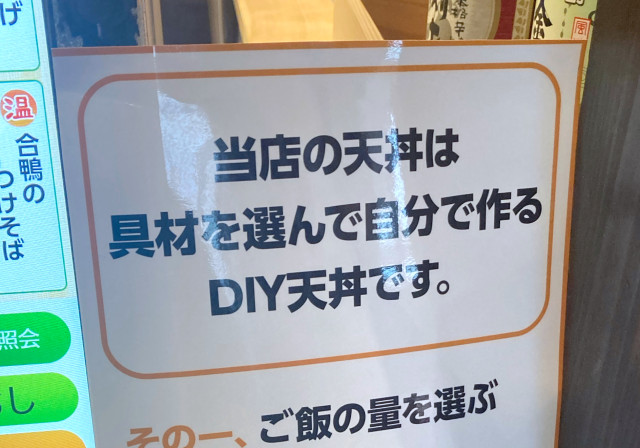
Do you cook it yourself? Put it together yourself, buffet style? What does it mean?!?!
When you see the phrase “DIY” you probably think home projects or crafts, projects you can do yourself that are somewhat fun, or at least a little bit fulfilling, like that time we plastered our car (sort of). At least, that’s what our Japanese-language reporter Mr. Sato thinks when he sees it. Imagine his surprise when he saw the phrase in use at a restaurant!
Wamin no Kodawari Noren-gai is a collection of food-stalls with an izakaya (Japanese pub) vibe in the Oimachi neighborhood of Tokyo, including such brands as Wang’s Garden (a Shichuan restaurant), Sushi no Wa (a sushi restaurant), and Yakiniku Kamimura Baijo.
Mr. Sato headed over on a weekday just after they opened for lunch at 11:30. At the entrance, a ticket machine, where you place your food order and pay, was waiting. Mr. Sato had hoped to enjoy food from each of the different food stalls, but it seems that lunch has a fixed menu of soba and tempura.
But just as he was resigning himself to having a somewhat ordinary lunch, a side to the sign caught his eye. It said…
“Our tempura bowls are DIY, so you can make your own by choosing what you like.”
In Mr. Sato’s estimation, “DIY” means “do-it-yourself,” so does that mean once you pick your tempura bowl toppings, you fry them yourself? Well, “fry-it-yourself” restaurants aren’t all that uncommon, so that wouldn’t be that surprising. Wamin no Kodawari Noren-gai sort of has that kind of casual vibe anyway.
“I mean, there could be the possibility that they’d let me into the kitchen to fry my own tempura…right?” Mr. Sato mused. “…Nah!”
No way would a restaurant kitchen let their customers in to use their inside-the-kitchen equipment. Still, there was no doubt there was some element of “do-it-yourself” involved, so Mr. Sato was interested to find out.
It turned out that, while his imagination ran away with him, the answer was just under the first part of the sign.
▼ “Step 1: Choose your rice size. Step 2: Chose your desired tempura ingredients. Step 3: Put your tempura on top of the rice and pour over tempura sauce.”
The only DIY element was that you could pick what type of tempura you wanted to have with your rice. That was slightly disappointing, but still sounded kind of fun, so Mr. Sato decided to do that.
The first step to building your own tempura bowl is to choose what kind rice you want, and how much. “Tempura Bowl Rice,” which has seaweed strips on top and tempura sauce on the side, comes in regular and large sizes, costing 300 yen (US$1.98) and 350 yen respectively. Plain rice is also an option, at 200 yen for regular and 250 yen for large, so that’s a good choice if you’re looking to keep your meal cheap.
Plain rice seemed boring, though, so Mr. Sato chose Tempura Bowl Rice. The next step is to choose your tempura toppings. Lotus roots, sweet potatoes, and shiitake mushrooms are just 100 yen each, so you can top your plain rice with those and have a vegetarian meal for 500 yen.
Of course, Mr. Sato wasn’t here for a cheap meal; he wanted a gourmet meal. So after selecting an exorbitant amount of food, here’s what arrived at Mr. Sato’s table:
▼ The tempura was placed on separate plates for some reason, so perhaps the last DIY element was to put your tempura bowl together?
On the first plate was prawn tempura (150 yen), dark-meat chicken (150 yen), and anago (saltwater eel) (400 yen).
In Mr. Sato’s estimation, the anago was about 20 centimeters (7.9 inches) long, which was way longer than he’d anticipated. That was a pleasant surprise.
He also got kakiage (400 yen), a mix of tempura seafood and vegetables. It contained onions, carrots, and shrimp.
Never one to shy away from big food, Mr. Sato dumped all of that on top of his tempura rice. It barely fit in the bowl, and Mr. Sato realized he probably should have gotten a large rice, which comes in a larger bowl.
His first bite of the kakiage proved that the batter was crispy-crunchy and the interior piping hot. It really brought out the sweet and spicy flavor of the tempura sauce. Honestly, the tempura sauce is what tied the whole dish together, so Mr. Sato highly recommends you opt for tempura rice instead of plain rice. You can taste the 100-yen difference. Actually, he also wished they’d sell the sauce on its own so he could have extra.
And while he was making wishes, he also wished they sold dashi chazuke, hot broth poured over rice, which would be the perfect way to finish off this meal.
What the restaurant does have, though, is all-you-can-eat soba for 1,280 yen, which is clutch for big appetites. Paired with some tempura, it could be a super filling meal!
But don’t sleep on that DIY Tempura Bowl. It was super tasty, and you don’t actually have to fry it yourself, plus you have free choice of your toppings, so you can easily build the meal of your dreams.
Restaurant information
New Combined Izakaya Wamin no Kodawari Noren-gai / 新総合居酒屋 和民のこだわりのれん街
Tokyo-to Shinagawa-ku Higashi-Oi 5-17-2 Hayashi Building 1-2F
東京都品川区東大井5丁目17-2 林ビル1・2F
Open 11:30 a.m.-2:30 p.m. 4 p.m.-3 a.m. (Monday-Thursday), 4 p.m.-3 a.m. (Friday and days before a holiday), 3 p.m.-3 a.m. (Saturdays), 3 p.m.-11 p.m. (Sundays and holidays)
Images © SoraNews24
● Want to hear about SoraNews24’s latest articles as soon as they’re published? Follow us on Facebook and Twitter!
[ Read in Japanese ]


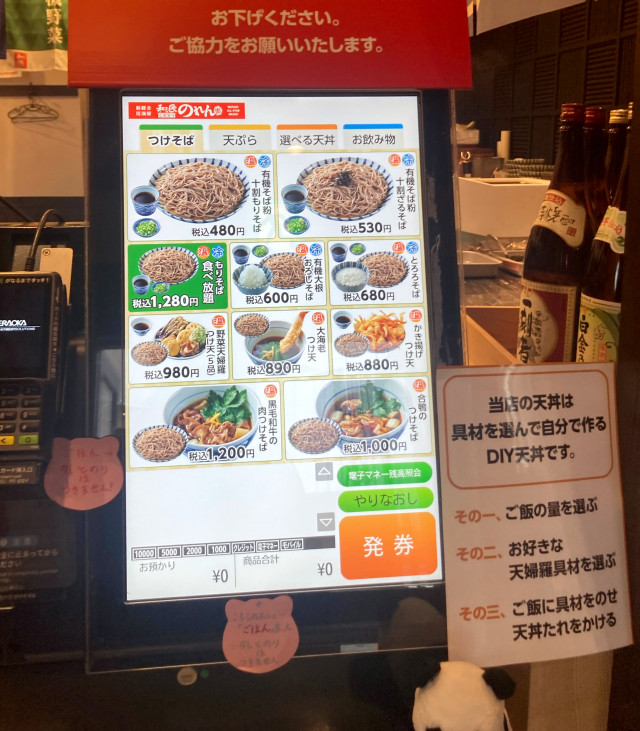

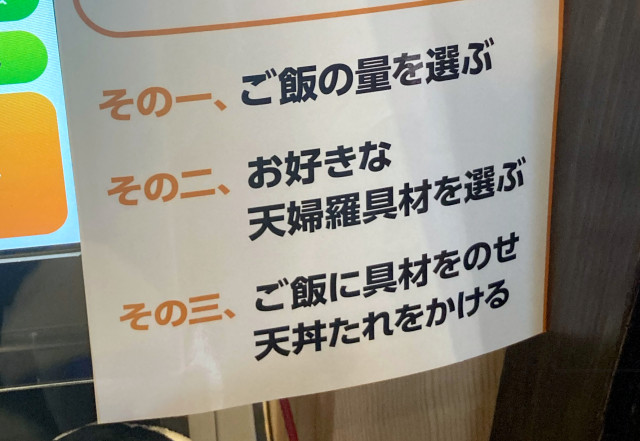
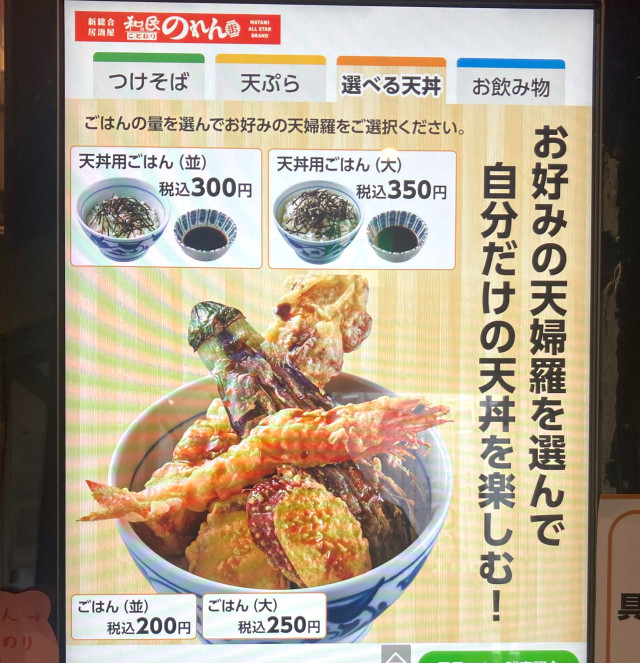
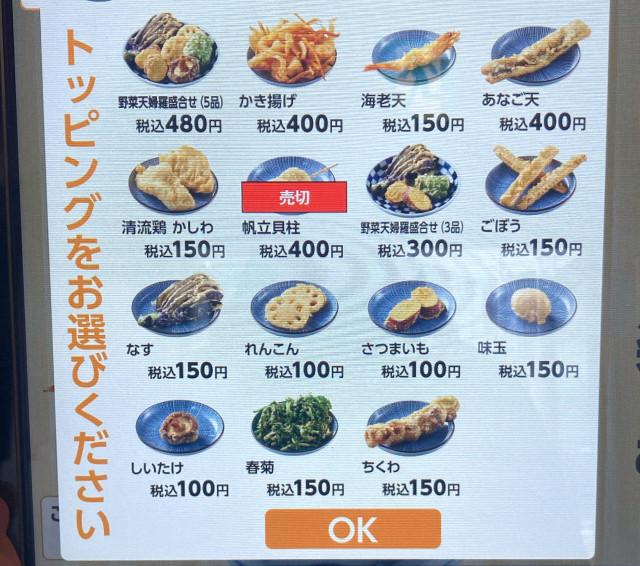
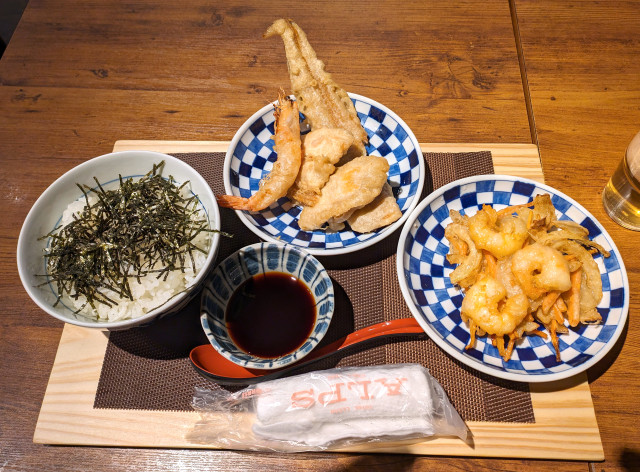
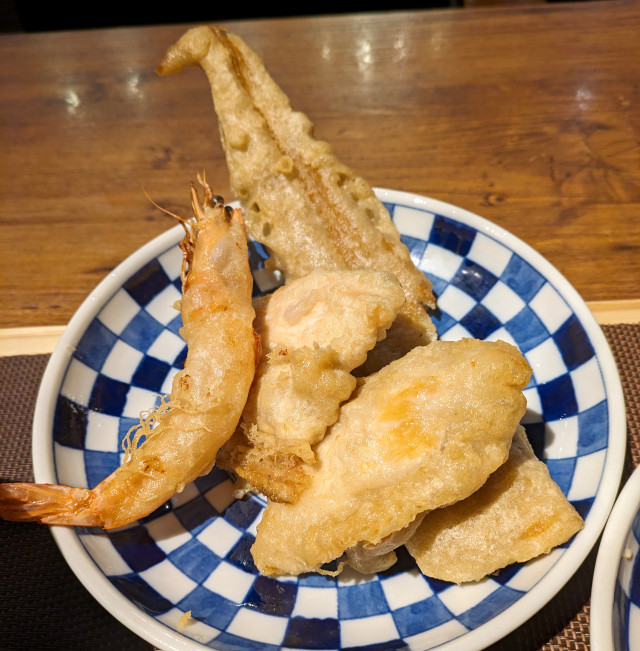
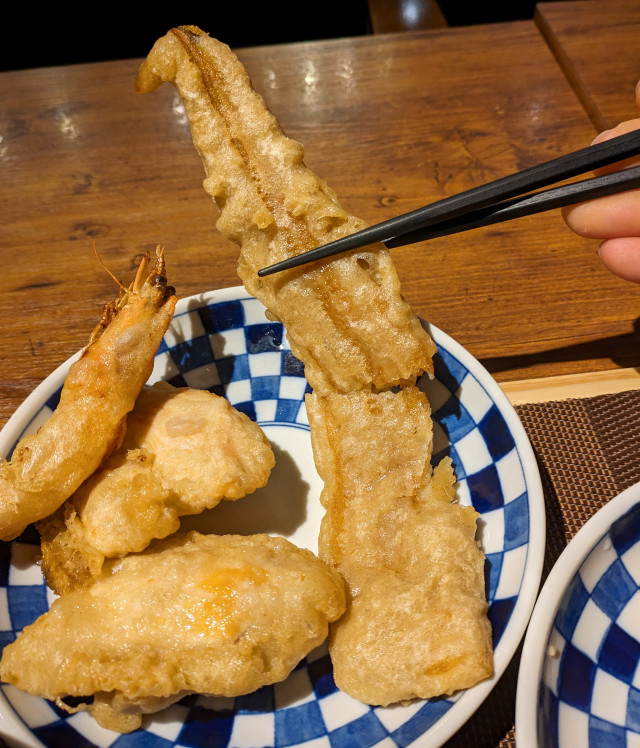
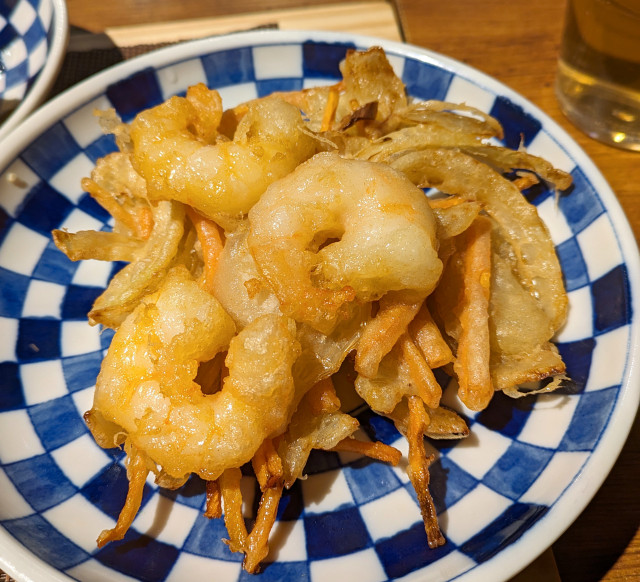
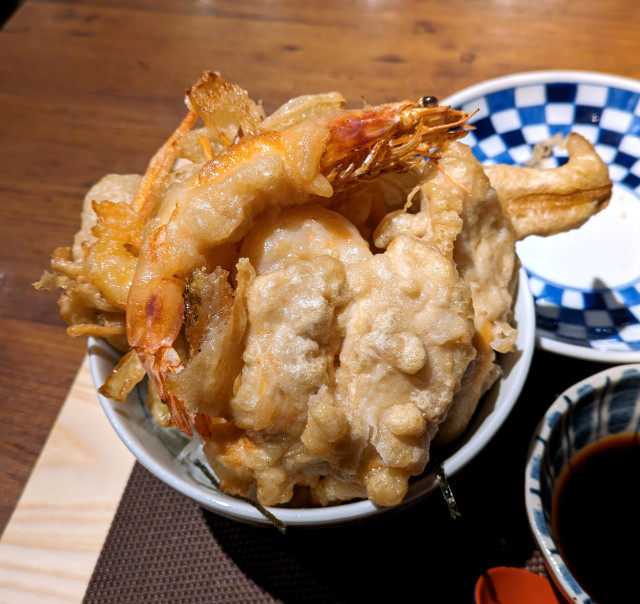
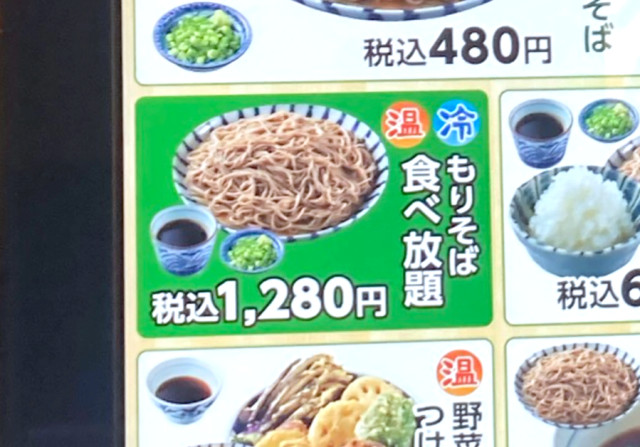
 How to make a delicious tempura nothing bowl without any actual cooking【SoraKitchen】
How to make a delicious tempura nothing bowl without any actual cooking【SoraKitchen】 Move aside hot dogs, the Tempura Udon Dog is here, and it’s amazing
Move aside hot dogs, the Tempura Udon Dog is here, and it’s amazing Udon chain’s awesome “Tempura Pass” deal works out to less than 10 yen per piece over five weeks
Udon chain’s awesome “Tempura Pass” deal works out to less than 10 yen per piece over five weeks How to turn leftover tempura into fried rice (or why to buy all the takeout tempura you can)
How to turn leftover tempura into fried rice (or why to buy all the takeout tempura you can) Cheap vs. expensive — Is a premium-priced tempura bento really worth it?【Taste test】
Cheap vs. expensive — Is a premium-priced tempura bento really worth it?【Taste test】 Foreigner’s request for help in Tokyo makes us sad for the state of society
Foreigner’s request for help in Tokyo makes us sad for the state of society Bad tourist manners at Mt Fuji Lawson photo spot prompts Japanese town to block view with screens
Bad tourist manners at Mt Fuji Lawson photo spot prompts Japanese town to block view with screens FUK COFFEE?!? Japanese cafe has a perfectly innocent reason for its startling-looking name
FUK COFFEE?!? Japanese cafe has a perfectly innocent reason for its startling-looking name One of Japan’s oldest castles now lets travelers spend night on the grounds, drink in its keep
One of Japan’s oldest castles now lets travelers spend night on the grounds, drink in its keep McDonald’s Japan’s new pancake pie is a taste sensation
McDonald’s Japan’s new pancake pie is a taste sensation Two things to do, and two things not to do, when leaving a traditional Japanese inn
Two things to do, and two things not to do, when leaving a traditional Japanese inn Who wins in a battle of McDonald’s and Komeda Coffee’s chicken tatsuta burgers?【Taste test】
Who wins in a battle of McDonald’s and Komeda Coffee’s chicken tatsuta burgers?【Taste test】 Japanese-style accommodation at the new Premium Dormy Inn hotel in Asakusa will blow your mind
Japanese-style accommodation at the new Premium Dormy Inn hotel in Asakusa will blow your mind Studio Ghibli unveils massive T-shirt collection featuring top anime movie characters
Studio Ghibli unveils massive T-shirt collection featuring top anime movie characters Yakuza lieutenant arrested in Tokyo for stealing Pokémon cards
Yakuza lieutenant arrested in Tokyo for stealing Pokémon cards Japanese ramen restaurants under pressure from new yen banknotes
Japanese ramen restaurants under pressure from new yen banknotes Red light district sushi restaurant in Tokyo shows us just how wrong we were about it
Red light district sushi restaurant in Tokyo shows us just how wrong we were about it McDonald’s new Happy Meals offer up cute and practical Sanrio lifestyle goods
McDonald’s new Happy Meals offer up cute and practical Sanrio lifestyle goods Tokyo Tsukiji fish market site to be redeveloped with 50,000-seat stadium, hotel, shopping center
Tokyo Tsukiji fish market site to be redeveloped with 50,000-seat stadium, hotel, shopping center Japanese city loses residents’ personal data, which was on paper being transported on a windy day
Japanese city loses residents’ personal data, which was on paper being transported on a windy day Beautiful Red and Blue Star luxury trains set to be Japan’s new Hokkaido travel stars
Beautiful Red and Blue Star luxury trains set to be Japan’s new Hokkaido travel stars Ghibli Park now selling “Grilled Frogs” from food cart in Valley of Witches
Ghibli Park now selling “Grilled Frogs” from food cart in Valley of Witches New definition of “Japanese whiskey” goes into effect to prevent fakes from fooling overseas buyers
New definition of “Japanese whiskey” goes into effect to prevent fakes from fooling overseas buyers Our Japanese reporter visits Costco in the U.S., finds super American and very Japanese things
Our Japanese reporter visits Costco in the U.S., finds super American and very Japanese things All-you-can-drink Starbucks and amazing views part of Tokyo’s new 170 meter-high sky lounge
All-you-can-drink Starbucks and amazing views part of Tokyo’s new 170 meter-high sky lounge More foreign tourists than ever before in history visited Japan last month
More foreign tourists than ever before in history visited Japan last month New Pokémon cakes let you eat your way through Pikachu and all the Eevee evolutions
New Pokémon cakes let you eat your way through Pikachu and all the Eevee evolutions Disney princesses get official manga makeovers for Manga Princess Cafe opening in Tokyo
Disney princesses get official manga makeovers for Manga Princess Cafe opening in Tokyo We try out “Chan Ramen”, an underground type of ramen popular in the ramen community
We try out “Chan Ramen”, an underground type of ramen popular in the ramen community Sales of Japan’s most convenient train ticket/shopping payment cards suspended indefinitely
Sales of Japan’s most convenient train ticket/shopping payment cards suspended indefinitely Sold-out Studio Ghibli desktop humidifiers are back so Totoro can help you through the dry season
Sold-out Studio Ghibli desktop humidifiers are back so Totoro can help you through the dry season Japanese government to make first change to romanization spelling rules since the 1950s
Japanese government to make first change to romanization spelling rules since the 1950s Ghibli founders Toshio Suzuki and Hayao Miyazaki contribute to Japanese whisky Totoro label design
Ghibli founders Toshio Suzuki and Hayao Miyazaki contribute to Japanese whisky Totoro label design Doraemon found buried at sea as scene from 1993 anime becomes real life【Photos】
Doraemon found buried at sea as scene from 1993 anime becomes real life【Photos】 Tokyo’s most famous Starbucks is closed
Tokyo’s most famous Starbucks is closed One Piece characters’ nationalities revealed, but fans have mixed opinions
One Piece characters’ nationalities revealed, but fans have mixed opinions We asked a Uniqlo employee what four things we should buy and their suggestions didn’t disappoint
We asked a Uniqlo employee what four things we should buy and their suggestions didn’t disappoint Hida City’s tempura mochi proves that almost anything tastes better as tempura 【SoraKitchen】
Hida City’s tempura mochi proves that almost anything tastes better as tempura 【SoraKitchen】 This Tempura Soba Burger has some famous credentials behind its creation
This Tempura Soba Burger has some famous credentials behind its creation 7-Eleven’s new Ebiten tempura shrimp rice ball is premium in both taste AND cost
7-Eleven’s new Ebiten tempura shrimp rice ball is premium in both taste AND cost Crazy Tokyo restaurant offers a 7.3-pound tempura rice bowl, so of course we had to eat it!
Crazy Tokyo restaurant offers a 7.3-pound tempura rice bowl, so of course we had to eat it! Kakiage towers and Italian soba? We try out a unique soba restaurant in Tokyo
Kakiage towers and Italian soba? We try out a unique soba restaurant in Tokyo Clam chowder tempura being offered by Japan’s most popular tempura restaurant chain
Clam chowder tempura being offered by Japan’s most popular tempura restaurant chain Wear your love for Nissin Donbei noodle bowls on your bag with these cute mini charms
Wear your love for Nissin Donbei noodle bowls on your bag with these cute mini charms We find Italian Soba at an Aomori fish market that insisted it’s perfect for the beach
We find Italian Soba at an Aomori fish market that insisted it’s perfect for the beach Tokyo’s Curry Udon Croquette Burger is four of Japan’s favorite foods in one【Taste test】
Tokyo’s Curry Udon Croquette Burger is four of Japan’s favorite foods in one【Taste test】 New Japanese dish combines two summertime greats – soba noodles and kakigori shaved ice
New Japanese dish combines two summertime greats – soba noodles and kakigori shaved ice Think you’ve had every type of tempura? Not until you’ve eaten deep-fried maple leaves
Think you’ve had every type of tempura? Not until you’ve eaten deep-fried maple leaves How to have a great meal at conveyer belt sushi chain Kura Sushi even if you hate raw fish
How to have a great meal at conveyer belt sushi chain Kura Sushi even if you hate raw fish No one asked but we did it anyways: MOS rice patty burgers X ochazuke【Taste test】
No one asked but we did it anyways: MOS rice patty burgers X ochazuke【Taste test】 Popcorn shrimp udon, as in noodles with popcorn and shrimp, now on the menu in Tokyo【Taste test】
Popcorn shrimp udon, as in noodles with popcorn and shrimp, now on the menu in Tokyo【Taste test】 Japan’s one-person mini tempura pot turns every day into fry day
Japan’s one-person mini tempura pot turns every day into fry day Frozen pudding pops among the many surprises at Ramen Deniro in Tokyo
Frozen pudding pops among the many surprises at Ramen Deniro in Tokyo
Leave a Reply